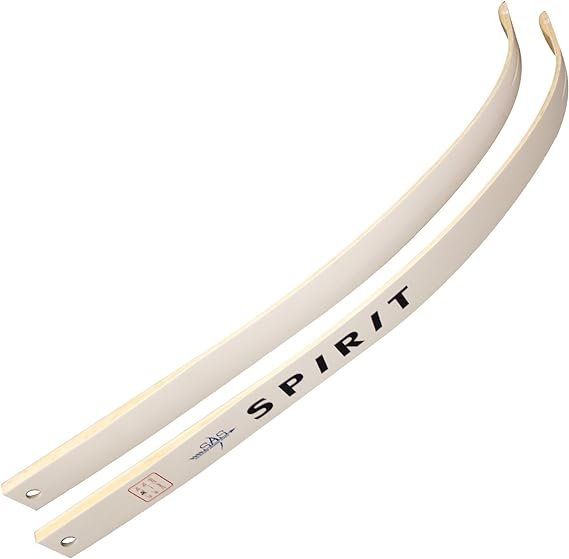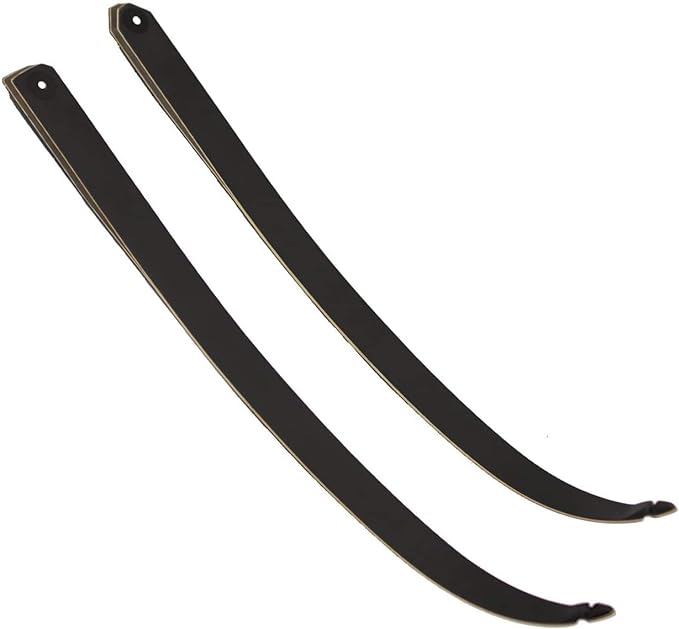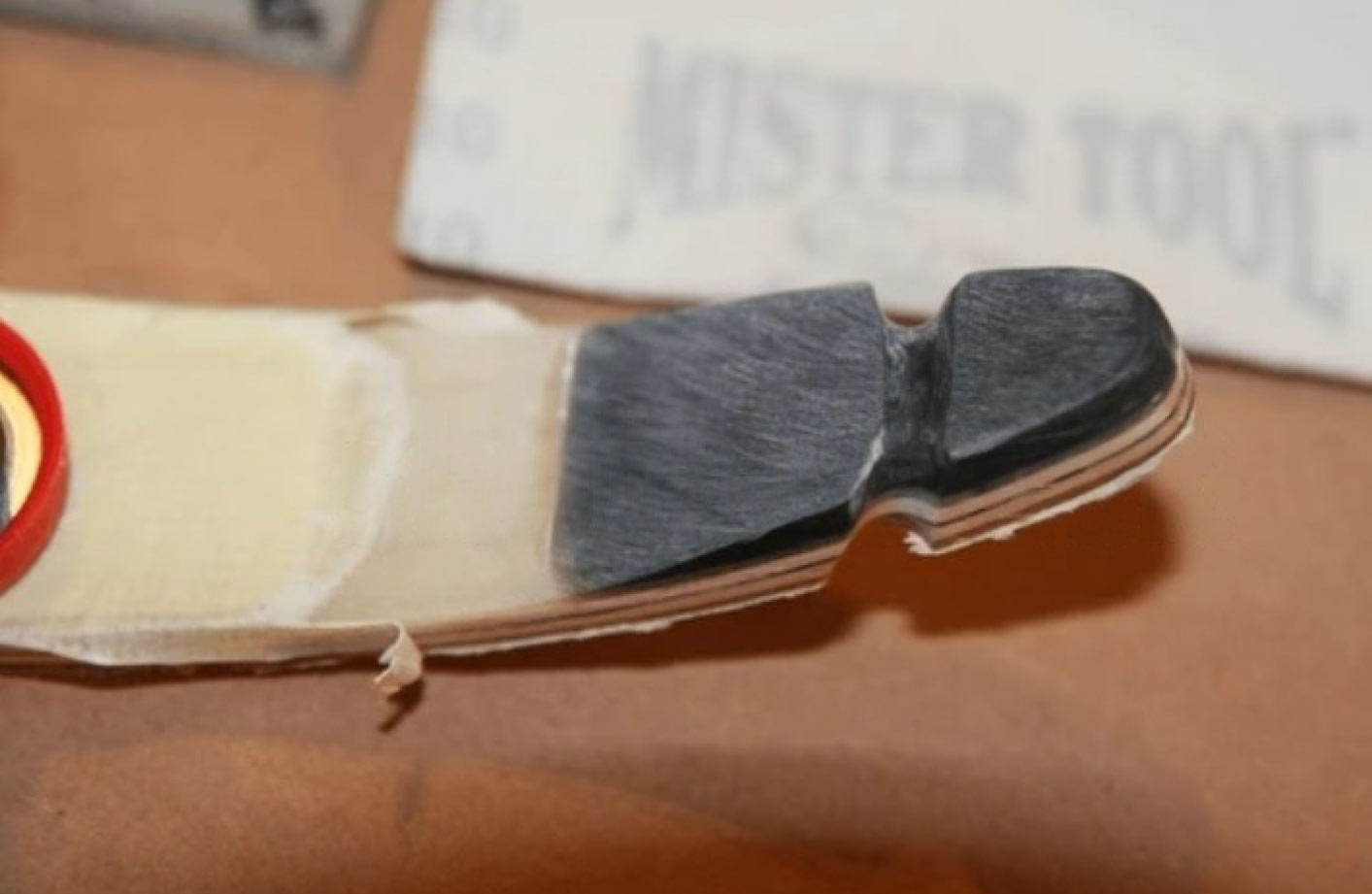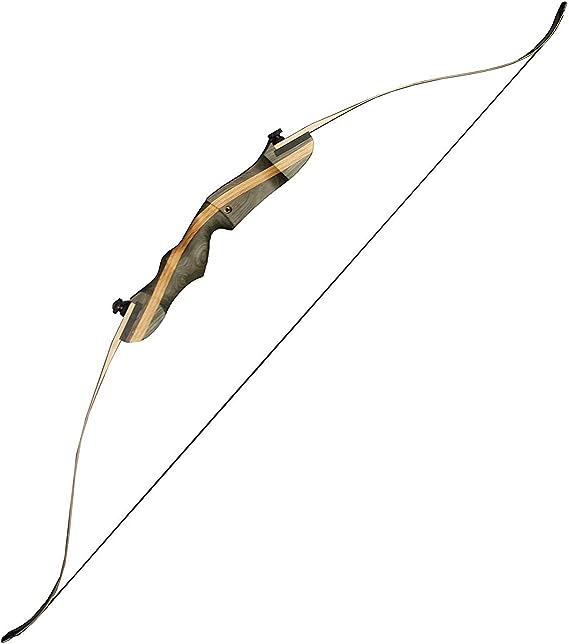Recurve bow parts can be made of fiberglass, metal, or other materials. It’s important to know the pros and cons of each material because picking the wrong one can really affect how well you do at shooting.
We will talk about the differences between aluminum and fiberglass recurve bow parts in this blog post so that you can make a smart decision.
Comparison Chart: Aluminum vs Fiberglass Recurve Bow Limbs
A detailed comparison chart for aluminum and fiberglass recurve bow limbs:
| Feature | Aluminum Recurve Bow Limbs | Fiberglass Recurve Bow Limbs |
|---|---|---|
| Material | Made of aluminum | Made of fiberglass |
| Weight | Heavier than fiberglass limbs | Lighter than aluminum limbs |
| Performance | Excellent | Limited |
| Stiffness | Less flexible than fiberglass limbs, providing more stability and accuracy | More flexible than aluminum limbs, which can cause the bow to vibrate more and decrease accuracy |
| Speed | Slower than fiberglass limbs due to their heavier weight | Faster than aluminum limbs due to their lighter weight |
| Adjustability | Highly adjustable | Less adjustable |
| Durability | More durable than fiberglass limbs, with the ability to withstand impacts and mishandling | Less durable than aluminum limbs, with the potential to chip or crack if hit or dropped |
| Price | Generally more expensive than fiberglass limbs due to the higher cost of materials and manufacturing | Generally less expensive than aluminum limbs due to the lower cost of materials and manufacturing |
| Appearance | They often have a shiny metallic finish, giving them a sleek and modern appearance | They often have a smooth, matte finish, giving them a more traditional and natural appearance |
| Suitable for | Intermediate to advanced archers who require greater stability and accuracy and are willing to pay a higher price for the added benefits | Beginner to intermediate archers who are looking for a more affordable option and are still developing their technique and form |
Aluminum limbs are heavier, stiffer, and slower, but more durable and provide greater stability and accuracy. They are generally more expensive and have a modern appearance.
Fiberglass limbs are lighter, more flexible, and faster, but less durable and may vibrate more. They are generally less expensive and have a more traditional appearance. The suitability of each type of limb depends on the archer’s skill level, needs, and budget.
- If you want to buy the best recurve bow for hunting, go to this detailed article.
- How to Buy a Perfect Recurve Bow for You
Pros and Cons: Aluminum VS Fiberglass Bow Limbs

Pros of Aluminum Recurve Bow Limbs:
- Strong and durable, can withstand a lot of stress and pressure
- Customizable weight and flexibility for greater precision and control
- Generally used by experienced archers who require high performance
Cons of Aluminum Recurve Bow Limbs:
- More expensive than fiberglass limbs
- It may not be necessary for beginners or casual archers who do not require high performance
- Can be more difficult to handle due to their stiffness
Fiberglass Limbs: Pros and Cons
Pros of Fiberglass Recurve Bow Limbs:
- Affordable and easy to use
- Lightweight and forgiving, less likely to break if mishandled
- Great option for beginners and casual archers who do not require high performance
Cons of Fiberglass Recurve Bow Limbs:
- Less durable than aluminum limbs
- Limited customization options for weight and flexibility
- May not provide the same level of performance as aluminum limbs for experienced archers
Differences Between Fiberglass vs Aluminum Recurve bow limbs?
Recurve bow limbs come in a variety of materials, including fiberglass and aluminum. Each material has its own unique set of advantages and disadvantages, and choosing the right one can make a significant difference in your archery experience.
Fiberglass Recurve Bow Limbs


Fiberglass is a popular material for recurve bow limbs because it is lightweight, durable, and affordable. Layering fiberglass strands in a resin matrix and then curing them under pressure and heat creates fiberglass limbs.
Beginner or cost-conscious archers frequently use them because they are available in a variety of colors and finishes.
Advantages of Fiberglass Recurve Bow Limbs:
- Lightweight: Fiberglass limbs are lightweight, making them easy to handle and maneuver.
- Affordable: Fiberglass limbs are relatively inexpensive, making them an excellent option for beginners or those on a tight budget.
- Durable: Fiberglass limbs are strong and durable and can withstand frequent use.
- Vibration Dampening: Fiberglass limbs have excellent damping properties that help reduce vibration and noise during shooting.
Disadvantages of Fiberglass Recurve Bow Limbs:
- Limited Performance: Fiberglass limbs may not offer the same level of performance as higher-end materials like carbon or aluminum.
- Less Adjustable: Fiberglass limbs are often less adjustable than other materials, limiting the customization options.
Aluminum Recurve Bow Limbs


Aluminum is a popular choice for recurve bow limbs because it is strong, lightweight, and offers excellent performance. Extruding or forging the metal into the desired shape and then coating it with an anodized or painted finish creates aluminum limbs.
They are readily available in a variety of colors and finishes, and experienced or intermediate archers frequently use them.
Advantages of Aluminum Recurve Bow Limbs:
- Performance: Aluminum limbs offer excellent performance and power, making them suitable for intermediate or advanced archers.
- Adjustable: Aluminum limbs are highly adjustable, allowing for easy customization to fit the archer’s preference and shooting style.
- Lightweight: Aluminum limbs are lightweight, making them easy to handle and maneuver.
- Durable: Aluminum limbs are strong and durable and can withstand frequent use.
Disadvantages of Aluminum Recurve Bow Limbs:
- Expensive: Aluminum limbs can be expensive, making them less accessible for beginners or budget-conscious archers.
- Vibration: Aluminum limbs can produce more vibration and noise during shooting than other materials like fiberglass.
- Less forgiving: Aluminum limbs are less forgiving than other materials, meaning they require a more precise form and technique to shoot accurately.
What kind of Performance do Aluminum Recurve Bow Limbs Provide?


Aluminum recurve bow limbs are known for their exceptional performance, making them a popular choice among archers. These limbs are made of aluminum and designed to provide the perfect balance of strength, flexibility, and stability.
The performance provided by aluminum recurves bow limbs is unparalleled, making it an ideal choice for both beginners and seasoned archers.
Lightweight and Durable Performance
Aluminum recurve bow limbs are lightweight, durable, and offer better speed and accuracy than other materials. The lightweight design of the aluminum limbs helps reduce the overall weight of the bow, making it easier to carry and handle.
The durability of aluminum ensures that the limbs can withstand the stresses of shooting and last for a long time.
Flexibility Benefits
Moreover, aluminum recurve bow limbs are known for their flexibility. The flexibility of the limbs enables the archer to fire the arrow with greater force, providing better speed and accuracy.
The flexibility of the limbs also helps in reducing the noise and vibration caused by the bowstring, making shooting a more enjoyable experience.
Advantages of Aluminum Recurve Bow Limbs for Archers
In summary, aluminum recurve bow limbs offer excellent performance, making them a popular choice among archers. Their lightweight design, durability, and flexibility make them ideal for both beginners and seasoned archers.
If you are looking for a reliable and high-performing bow limb, aluminum recurve bow limbs are definitely worth considering.
Are fiberglass Recurve Bow Limbs Heavier Than Aluminum?
When it comes to choosing a recurve bow limb material, weight is an essential factor to consider. While both fiberglass and aluminum are popular choices, many people wonder which one is heavier.
Weight Comparison between Fiberglass and Aluminum Bow Limbs
In general, fiberglass recurve bow limbs tend to be heavier than aluminum ones. This is because fiberglass is a denser material than aluminum, meaning it weighs more per cubic inch.
The difference in weight is not always significant, and it ultimately depends on the specific design and construction of the bow.
The Benefits of Fiberglass and Aluminum Bow Limbs
Fiberglass limbs are often used in entry-level bows, where affordability and durability are important factors. They are also known for their flexibility, making them a good option for beginner archers who may not have developed a consistent shooting form yet.
On the other hand, aluminum limbs are typically found in higher-end bows and are favored by more experienced archers. They are lighter and faster than fiberglass limbs, which can result in a smoother and more accurate shot. Additionally, aluminum limbs are less likely to warp or bend over time, providing a more consistent performance.
Considerations Beyond Limb Weight When Selecting a Recurve Bow
It’s important to note that the weight of the limbs is only one factor to consider when selecting a recurve bow. Other factors such as length, draw weight, and riser material, can also have a significant impact on the overall feel and performance of the bow.
Ultimately, the best choice for you will depend on your personal preferences, skill level, and intended use for the bow.
Conclusion
The choice between aluminum vs fiberglass recurve bow limbs boils down to a trade-off between various factors, and the decision should align with your archery needs and preferences.
Experienced archers seeking exceptional accuracy may prefer aluminum limbs, while beginners or those on a budget may find fiberglass limbs more suitable. Additionally, other factors like bow length, draw weight, and riser material should also be considered to ensure the overall performance and feel of the bow align with your preferences and needs..




